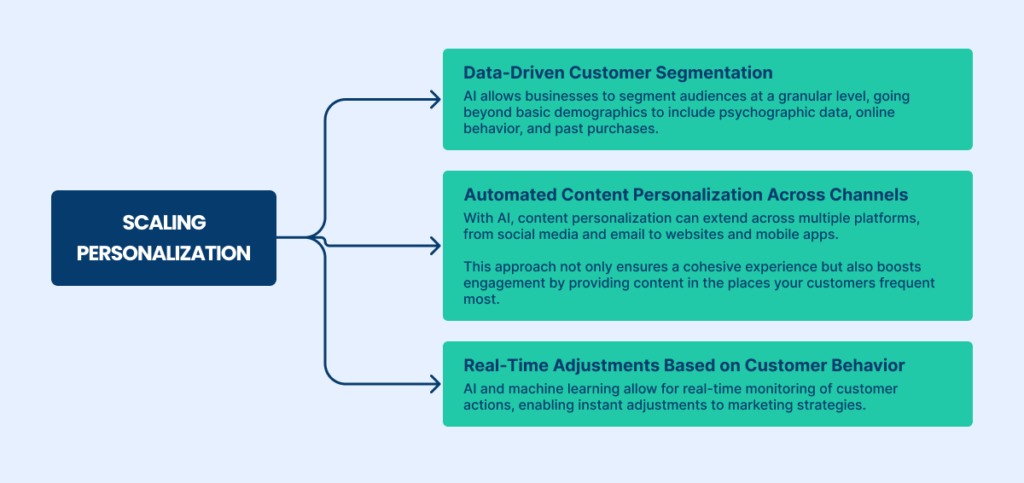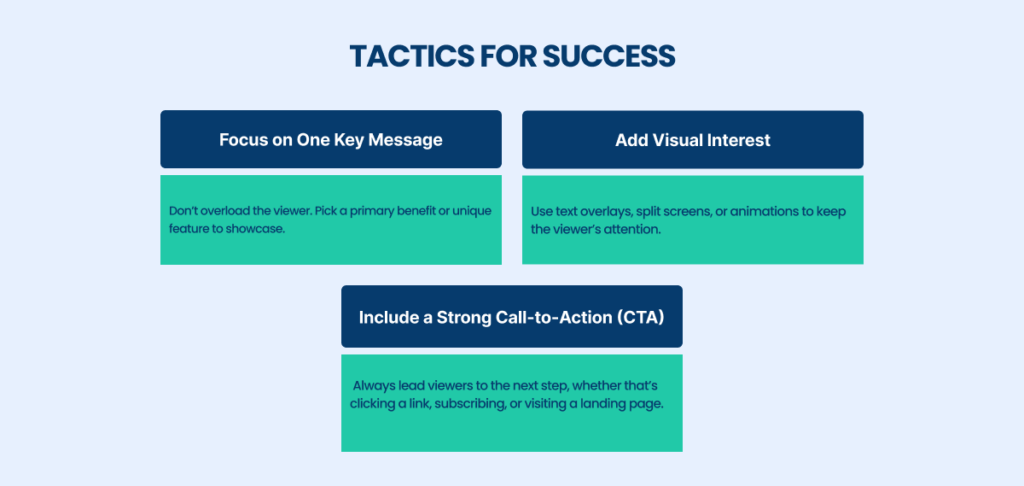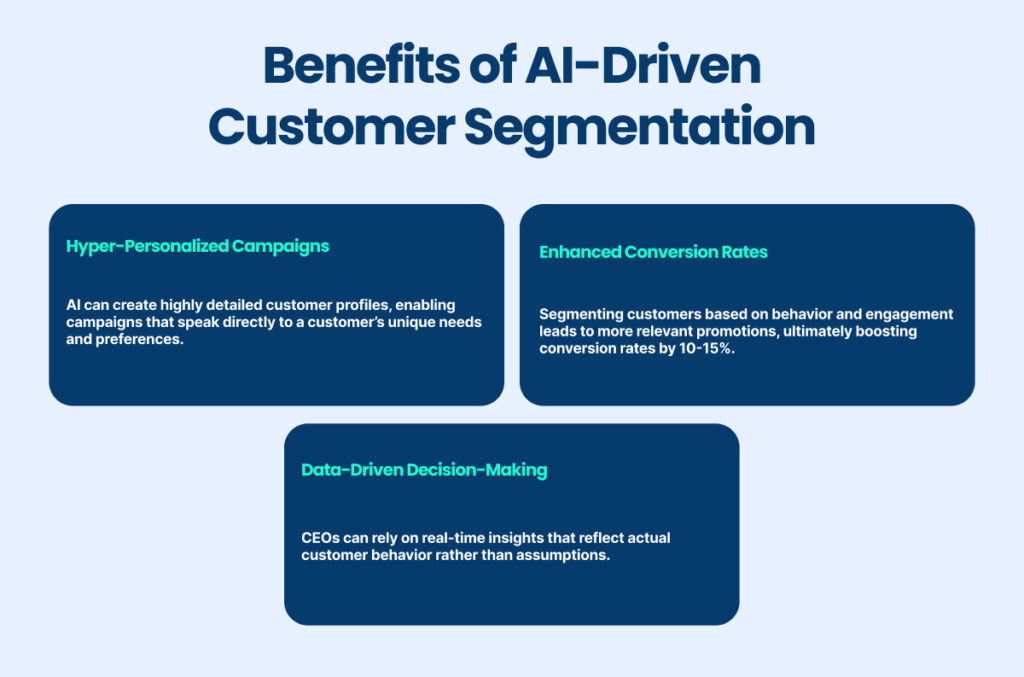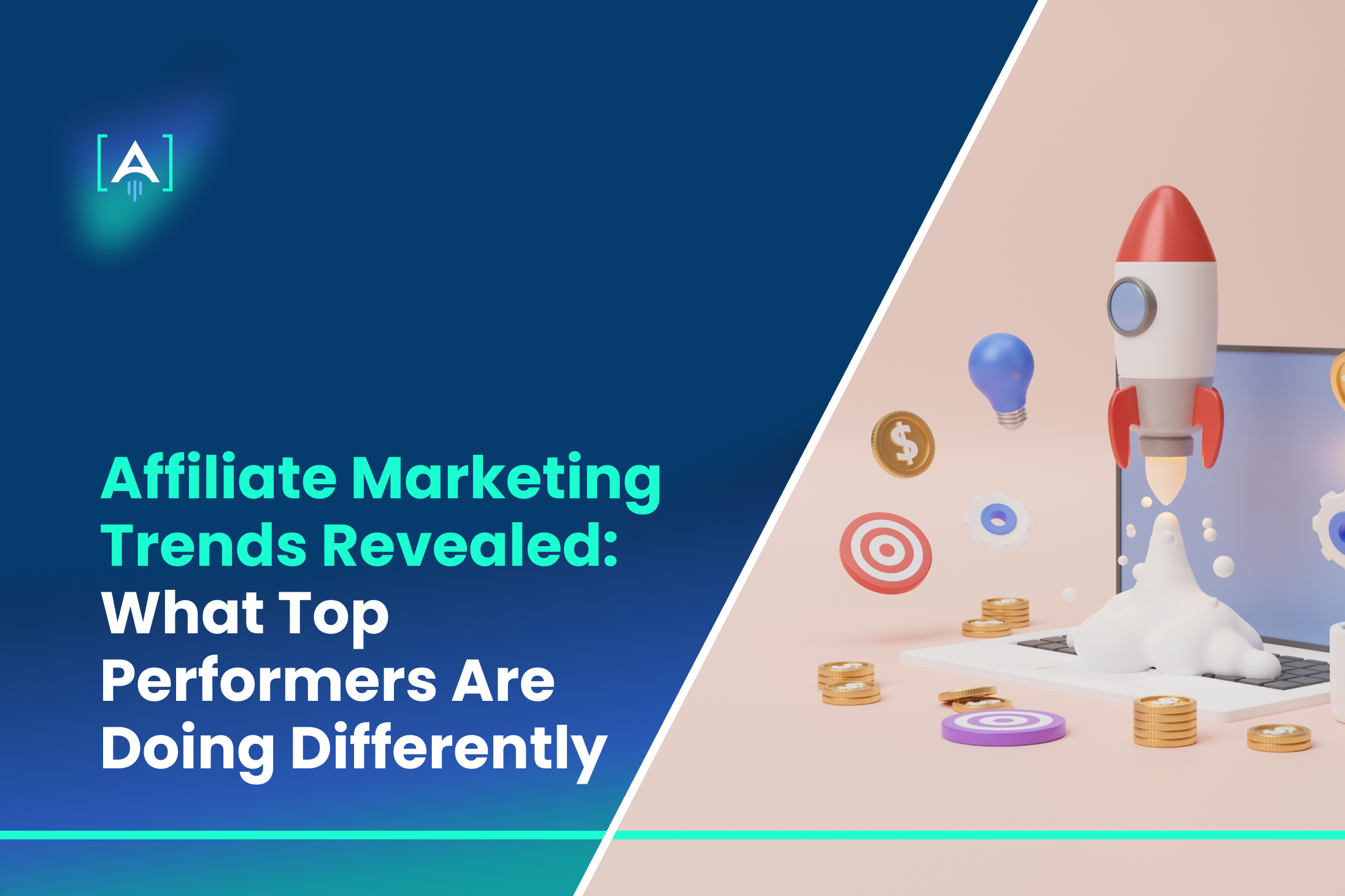In 60 seconds, you already know that:
- In 2023, affiliate marketing spending in the United States stood at 9.56 billion U.S. dollars.
- Affiliate Marketing is projected to increase to 10.72 billion in 2024 and further to roughly 12 billion in 2025.
- 81% of brands have affiliate programs, and 84% of publishers are involved in affiliate marketing.
Have you ever imagined that Affiliate Marketing could become one of the cornerstones of digital marketing? Now, it offers a lucrative opportunity for both businesses and individuals.
Affiliate marketing has consistently shown its strength as a reliable growth driver, even amid changing market landscapes.
Source: Ahrefs
With a promising outlook, an increasing number of companies are embracing the potential of affiliate marketing.
Indeed, the process can become more achievable and successful if you consider cooperating with a professional Growth Marketing Agency.
If you are ready, from leveraging emerging technologies to adapting to shifting consumer behaviors, we’ll explore the strategies that are driving success in this dynamic industry.
Personalized Partnerships: How to Engage Your Audience Like Never Before
Generic content and broad messaging often miss the mark.
Audiences want content that speaks to them directly and that feels personalized and relevant. Especially within affiliate marketing, cookie-cutter content simply won’t cut it anymore.
To build genuine connections, businesses need to focus on hyper-targeted content that resonates with niche audiences.
Personalization isn’t just a trend. It’s a necessary strategy for businesses aiming to increase growth marketing and maximize their AI ROI.
Source: McKinsey Research
Personalized marketing has grown significantly with AI and data insights, allowing companies to understand—and even predict—consumer behaviors. These tools enable businesses to reach potential customers at the right time, on the right platform, and with the right message.
For business owners and CEOs, this shift toward hyper-targeted content offers a powerful way to drive customer growth and stay competitive. Here’s how you can leverage personalized, data-driven strategies to boost your affiliate marketing results.
What AI Knows About Your Customers That You Don’t
While traditional marketing relies on past behaviors, AI-powered insights give businesses the ability to understand real-time customer intent.
Through machine learning and data analytics, AI identifies unique customer behaviors, predicting needs and interests even before a customer realizes them. This results in a highly personalized experience that enhances customer loyalty and drives growth.
- Predicting Interests and Preferences: AI analyzes patterns in user behavior to predict which products or services a customer is likely to be interested in.
For example, if a customer frequently clicks on content about sustainable products, AI can prioritize affiliate content that aligns with those values.
- Personalized Product Recommendations: Think of how platforms like Amazon and Netflix suggest products or shows based on individual user behavior. Now, this level of personalization is available to affiliates too.
By integrating machine learning, affiliates can recommend products tailored to each user’s preferences, making their messaging more relevant and impactful. These data-driven recommendations can increase customer retention and boost overall ROI for affiliates.
- Tailored Content Through Natural Language Processing (NLP): NLP enables AI to interpret and categorize content based on a user’s browsing patterns and search queries.
This means affiliates can target specific interests with highly relevant blog posts, videos, or email marketing content, further enhancing the value for both the customer and the brand.
For instance, customers who frequently search for financial management solutions might be shown articles comparing accounting tools or recommending financial planners—an approach proven to elevate conversions.
Scaling Personalization: Automating Authenticity in Every Interaction
One of the biggest challenges for businesses is maintaining authenticity while scaling personalization.
As your audience grows, so does the complexity of creating a personalized experience for each customer. However, with the right AI-powered tools, you can automate the process, delivering authentic and meaningful content on a large scale without losing that personal touch.

From Content to Connection: How Video is Transforming Affiliate Marketing
Video content has rapidly shifted from a “nice-to-have” feature to a core strategy for successful affiliate marketing.
Gone are the days when written reviews and static images were enough to capture attention—especially for CEOs and business owners aiming for growth.
Today, video platforms like YouTube, Instagram Reels, and even LinkedIn provide affiliates with engaging formats that can demonstrate value, boost connection, and drive conversions in unique ways.
Video formats like YouTube Shorts, live product demos, and interactive tutorials offer affiliates a range of options to target and engage business-savvy audiences effectively.
And the payoff?
Studies show that 84% of people say they’ve been convinced to buy a product or service by watching a brand’s video, highlighting the impact of video on customer growth and ROI in affiliate marketing.
Short, Sharp, and Profitable: Making the Most of Micro-Content
The popularity of short-form video content, or micro-content, is undeniable.
Platforms like TikTok and Instagram Reels have set the stage, showing that videos as short as 15 seconds can generate remarkable engagement.
But beyond the social media craze, short-form content serves an essential function in affiliate marketing: quick, high-impact messaging that appeals to fast-paced audiences, including busy CEOs and decision-makers. These quick clips grab attention, highlight benefits, and create curiosity—all within a few seconds.
Why Short-Form Works: Short-form videos capture attention fast, presenting an ideal medium for business audiences who are often pressed for time. When an affiliate can convey key information concisely, it removes barriers, making the content more accessible and engaging.
For example, instead of a lengthy product review, affiliates might post a 20-second highlight reel that demonstrates key features and invites viewers to explore more.

Turning Views into Revenue: Proven Video Strategies
To make videos work harder for your business, consider using specific strategies designed to drive conversions. These strategies don’t just stop at garnering views—they focus on creating actionable results for affiliates and their business partners.
1. Product Demonstrations and Reviews
Product demos allow affiliates to showcase a product’s value in real-time. This is particularly impactful for complex or premium products where potential buyers may need more than a picture to feel confident in purchasing.
Video demonstrations give viewers a visual walk-through of features, showing them exactly what to expect and often addressing common questions right within the content.
2. Interactive Tutorials and ‘How-To’ Videos
Interactive tutorials do more than show a product; they guide the viewer through a process, making it feel hands-on. This format works well for affiliates aiming to attract and engage viewers through instructional content.
For instance, an affiliate promoting marketing software might create a series of step-by-step tutorials that help viewers optimize their campaigns, using the software as the tool of choice.
3. YouTube Shorts and Bite-Sized Case Studies
Bite-sized case studies and YouTube Shorts are perfect for highlighting success stories and delivering quick stats or results in an easily digestible format. Case studies can establish trust, while the short-form format keeps them engaging.
Why Micro-Influencers are the Hidden Gems of Affiliate Marketing?
It’s no longer just about collecting likes; it’s about building genuine relationships that drive real results.
Micro-influencers, with their specialized, dedicated followings, bring a higher level of trust and engagement to brands, making them valuable partners for long-term growth.
Unlike the flash-in-the-pan results from macro-influencers, these partnerships with micro-influencers can provide sustainable growth for businesses, resulting in both higher engagement rates and loyal customers who are more likely to take action.
Micro vs. Macro: Choosing the Right Influence Strategy for Your Brand
Choosing between micro and macro influencers boils down to aligning with your business goals. Macro-influencers, often seen as “celebrity” endorsers, bring an immediate broad reach, but there’s often a trade-off with engagement.
Source: Top Influencer Marketing Statistics
Macro-influencers reach a large audience, but this audience might be passive, which can reduce the overall impact. For CEOs and business owners, investing in an influencer strategy that prioritizes sustainable growth can be a smarter choice—and that’s where micro-influencers excel.
Why Micro-Influencers?
- Higher Engagement Rates: Micro-influencers typically see engagement rates 3-5 times higher than those of macro-influencers. Their followers view them as credible sources, leading to more meaningful interactions.
- Affordable and Targeted: Micro-influencers are often more budget-friendly, making them perfect for brands focusing on long-term, cost-effective growth marketing strategies.
- Niche Authority: Micro-influencers tend to be experts in their fields—whether it’s fitness, tech, or sustainable fashion. This focus helps them connect with their audience on a more personal level.
Example Strategy: For a fitness brand, working with micro-influencers specializing in home workouts or sustainable activewear could result in highly targeted engagement that connects directly to your brand values.
By working with micro-influencers, brands can leverage an affiliate marketing trend that prioritizes engagement over reach, creating a tailored approach that aligns with growth marketing goals.
Turning Followers into Advocates: The Micro-Influencer Advantage
The power of micro-influencers lies in their ability to turn followers into true advocates. This isn’t just about showcasing products; it’s about building authentic connections that foster brand loyalty.
By leveraging affiliate marketing trends and growth marketing strategies, brands can convert engaged followers into brand advocates who trust the micro-influencer’s recommendations and are more likely to become repeat customers.
How Micro-Influencers Drive Loyalty and Advocacy:
- Personalized Content: Micro-influencers often create customized content around products, giving it a personal touch that resonates with followers. This approach feels less like an ad and more like a genuine recommendation.
- Engagement as Community Building: Unlike macro-influencers who may have distant relationships with their followers, micro-influencers cultivate communities. Their followers often engage in meaningful conversations, ask questions, and even share their own experiences with the product or service.
AI in Action: What It Means for Modern Affiliate Marketing
Affiliate marketing is constantly evolving, and AI marketing is at the forefront of this change.
Business owners and CEOs are increasingly turning to AI-powered tools to make smarter, faster decisions that improve customer engagement and drive conversions.
Source: Artificial intelligence (AI) market size worldwide from 2020 to 2030, Statista
Key innovations like predictive analytics, customer segmentation, and behavior-based targeting are reshaping affiliate marketing trends, offering a level of precision that makes marketing efforts both effective and cost-efficient.
Better Data, Better Decisions: How AI Predicts What Works
In affiliate marketing, data is king. However, having raw data isn’t enough—what matters is the ability to interpret it and make decisions that work. This is where predictive analytics comes in.
Using machine learning, AI analyzes historical data to predict future outcomes, helping you identify what strategies will resonate best with your audience. This is essential for CEOs looking to stay competitive with growth marketing strategies that evolve with market demands.
How Predictive Analytics Supports Affiliate Marketing:
- Forecasting Campaign Success: Predictive analytics helps forecast which products will perform best, allowing you to make data-backed decisions on which affiliates to prioritize.
- Reducing Wasted Spend: Rather than investing broadly, predictive models can direct spending to high-impact areas. In affiliate marketing, this can mean focusing on campaigns that have higher conversion probabilities.
- Personalizing Customer Outreach: With predictive analytics, brands can identify specific customer preferences, creating tailored content that resonates.
AI-Driven Targeting: Reaching Your Customers at the Right Moment
Timing is everything in marketing, and AI-driven targeting allows brands to connect with customers at the most opportune moments.
By analyzing past interactions, shopping behaviors, and even time-of-day data, AI helps marketers engage with users exactly when they’re most likely to convert.
Behavior-Based Targeting in Action:
- Shopping Patterns: AI can detect patterns in browsing and buying habits, allowing brands to target users who are most likely ready to purchase.
- Time-Based Campaigns: By understanding when a user is most active, AI can automatically adjust messaging and offers to match a customer’s unique activity profile, whether that’s early morning, late at night, or on weekends.
- Interest-Based Recommendations: With behavior-based targeting, brands can offer highly relevant product recommendations, driving engagement by showing customers what they’re already interested in.
For CEOs, behavior-based targeting translates to higher engagement, as each interaction is aligned with the customer’s preferences. This doesn’t just improve immediate sales but also builds long-term loyalty.
Turning Data into Strategy: Using AI to Master Customer Segmentation
Customer segmentation has always been part of effective marketing, but AI takes this strategy to a whole new level.
AI-driven segmentation divides your customer base into micro-groups based on characteristics like purchasing behaviors, demographic information, and engagement history. With more refined segments, brands can deliver messages that resonate with each audience more deeply.

From Metrics to Mastery: Tracking the Right Data for Big Wins
Success in affiliate marketing hinges not just on launching campaigns but on tracking the metrics that truly matter.
For CEOs and business leaders, the most effective affiliate programs are backed by data-driven decisions that go beyond basic metrics.
Key indicators like Lifetime Value (LTV), Monthly Recurring Revenue (MRR), and Conversion Rate (CVR) offer deep insights into customer behavior, long-term profitability, and overall program health.
Why LTV is Your Key to Predicting Affiliate Success
Lifetime Value (LTV) is one of the most essential metrics in affiliate marketing. It measures the total revenue a customer generates over the entire relationship with a brand.
For CEOs, LTV serves as a crystal ball, helping predict the long-term success of affiliate marketing initiatives.
Higher LTV not only signals a stronger customer relationship but also suggests that affiliate partners are attracting valuable, loyal customers—not just one-time buyers.
Here’s why LTV is crucial:
- Predicting Long-Term Profitability: A higher LTV suggests that affiliate efforts are bringing in customers who are likely to stay, engage, and spend more over time. For brands, this translates into recurring revenue without the constant need for re-acquisition.
- Evaluating Affiliate Quality: Affiliates who contribute to high-LTV customers are invaluable. They’re not just driving traffic; they’re driving loyalty. This allows CEOs to focus resources on affiliates who bring in sustainable growth.
- Optimizing Marketing Spend: LTV can help refine your paid vs. organic strategy. Knowing how much a customer is worth over time enables better budgeting for both paid and organic campaigns, helping to decide when and where to invest in acquiring new customers.
Going Beyond CTR: Identifying Metrics That Move the Needle
Click-through rate (CTR) may be a common metric, but it barely scratches the surface when it comes to evaluating affiliate program success.
For CEOs, tracking metrics that reveal customer loyalty and growth potential can lead to more impactful decision-making.
Metrics like Conversion Rate (CVR), Monthly Recurring Revenue (MRR), and customer acquisition costs go much deeper, offering insights that truly move the needle.
Here’s why these metrics matter:
- Conversion Rate (CVR): While CTR tells you about interest, CVR measures action. In affiliate marketing, CVR is key to understanding how effectively traffic converts to actual customers.
A high conversion rate often points to optimized campaigns and engaged audiences, while a low CVR may indicate gaps in messaging or audience alignment.
- How to Use It: Monitor CVR across different affiliates to identify high-performing partners and campaigns. Consider tracking CVR by specific affiliate links to gain insight into which promotions or content types work best.
- Monthly Recurring Revenue (MRR): MRR is critical for subscription-based or recurring revenue models.
By tracking the growth in recurring income, CEOs can better understand the stability and predictability of cash flow generated by affiliates.
- Value for CEOs: MRR is essential for long-term planning, especially for businesses aiming for stable, predictable revenue streams. Monitoring MRR within affiliate programs offers insights into customer loyalty and renewal rates, helping business leaders make smarter growth projections.
- Customer Acquisition Cost (CAC): Knowing how much it costs to acquire a customer, especially compared to their LTV, allows CEOs to make efficient marketing decisions.
By understanding which affiliates bring in high-value customers at the lowest cost, you can allocate resources to maximize ROI and reduce unnecessary spending.
- Engagement and Retention Rates: Retention shows that affiliate customers aren’t just buying once; they’re sticking around. High retention rates mean your affiliate program is attracting not only traffic but also committed customers.
This indicates success with innovative marketing strategies and a quality affiliate partnership network.
- Action Tip: Ask your growth marketing agency about engagement trends within your affiliate programs. If retention or engagement drops, it might be time for an experimentation roadmap to test new strategies for re-engagement.
Final Takeaways: Affiliate Marketing Trends Revealed: What Top Performers Are Doing Differently
- Personalized Marketing and AI: AI-powered personalization has become essential, allowing businesses to deliver hyper-targeted content and predict customer behavior. This approach maximizes relevance, enhances customer growth, and boosts AI ROI.
- Power of Micro-Influencers: Micro-influencers with specialized followings create stronger trust and engagement, offering CEOs a cost-effective strategy to drive sustainable growth compared to traditional macro-influencers.
- Metrics Beyond CTR: Tracking critical metrics like Lifetime Value (LTV), Monthly Recurring Revenue (MRR), and Conversion Rate (CVR) offers deep insights into long-term profitability and helps optimize marketing spend.
- Short-Form Video Content: Short, engaging video formats like YouTube Shorts and Instagram Reels are essential tools for affiliate marketers. They grab attention quickly and convert views into revenue, catering to the fast-paced needs of business-savvy audiences.
- Growth Marketing Through Experimentation: Regularly testing affiliate strategies with an experimentation roadmap is key. This approach allows businesses to adapt to changing affiliate marketing trends, refine campaigns, and maximize returns on both paid and organic efforts.
Creating Seamless Affiliate Experiences That Drive Results
As we’ve explored, affiliate marketing is evolving rapidly, with emerging trends like hyper-personalized partnerships, AI-powered insights, and the growing role of micro-influencers shaping the landscape.
For businesses looking to stay competitive, success lies in adapting to these shifts, strategically leveraging data, and nurturing genuine connections.
Affiliate marketing has immense potential for growth when approached with thoughtful, data-driven strategies.
At [A] Growth Agency, we combine deep expertise with innovative tactics to help businesses realize this potential.
By aligning our strategies with your unique goals, we create impactful affiliate experiences that not only enhance brand reach but foster lasting customer relationships.
Whether you’re looking to refine your approach or fully embrace these trends, our team is ready to support you. Let’s turn insights into action and shape the future of your affiliate success—together.

